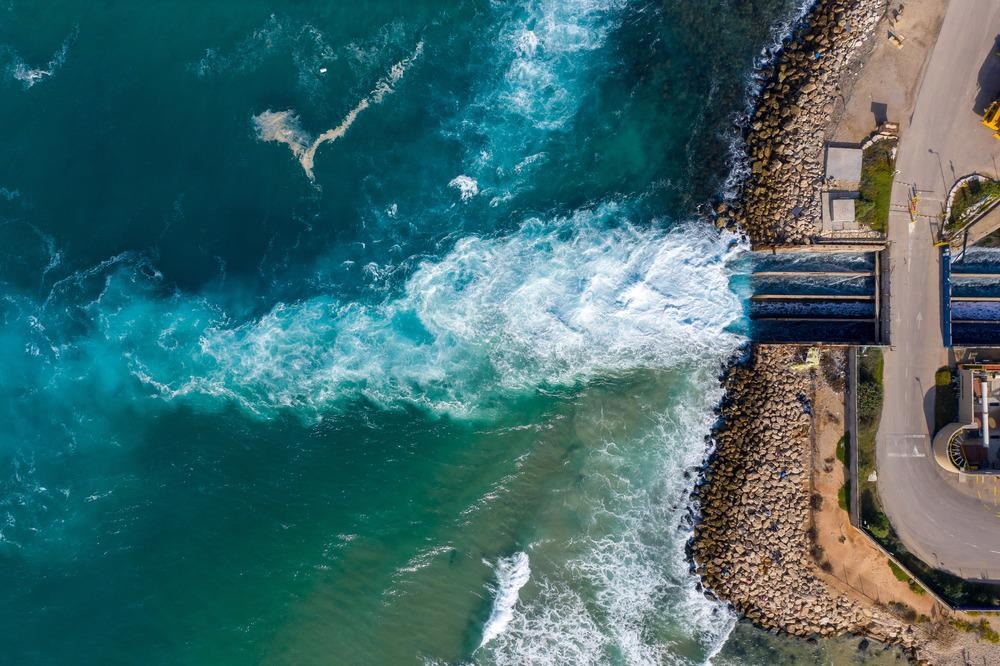Desalination technology and solar power technology are about to be combined for the first time in a major renewable energy project in Saudi Arabia. The Horizon 2020 project started in June 2021 and is expected to build a power plant combining solar power and desalination by May 2025.

Image Credit: Luciano Santandreu/Shutterstock.com
Introduction to the DESOLINATION Project
The “DESOLINATION” project is planned to last four years to 2025. As well as building the combined plant itself, the project includes plans to develop cutting-edge technology for solar power generation and desalination.
The aim is to use the most efficient possible technology for both applications in the finished plant.
Coupling the two technologies together in one plant will also demonstrate the benefits of combining desalination with solar power generation.
The plant will be built at the King Saud University in Riyadh, Saudi Arabia. When complete, it will generate low-cost renewable energy as well as low-cost freshwater, meeting Saudi Arabia’s need for efficient and accessible energy and water resources.
In press releases concerning the new project, it is claimed that the plant will be able to provide renewable electricity for less than €100 per megawatt-hour, and freshwater for less than €0.90 per cubic meter.
As well as meeting the country’s need for accessible energy and freshwater, the project will also address sustainability concerns. It is slated to deliver a 30% reduction in CO2 emissions compared to traditional desalination systems using forward osmosis.
Desalination systems using reverse osmosis and thermal desalination could see CO2 emissions reductions of 40% and 70%, respectively.
Solar Power Developments
Advancing solar power technology is a key aim of this project. At the forefront of this innovative workstream, carbon dioxide blends will be explored to improve the overall efficiency of solar power.
By blending CO2 with small quantities of doping agents, inorganic compounds, and fluorocarbons, the CO2 critical point can be increased. This in turn allows for condensed steam CO2 cycling in solar power generation, resulting in a more efficient and less expensive solar power technology.
This is because condensed steam CO2 cycles have a higher conversion efficiency compared to conventional steam CO2. This improved efficiency is predicted to enable electricity production for around €96 per megawatt-hour.
Latest Desalination Technology
The project intends to progress desalination technology by developing the forward osmosis technique for purifying water.
Forward osmosis capitalizes on the natural phenomenon of osmosis, where plants and trees take up water from the soil. This is a low-energy process that occurs in nature.
To work, two solutions with different concentrations are separated by a membrane which can be selective permeated. Different concentrations in water relate to differences in the water’s osmotic pressures.
Pure water flows from the less concentrated solution, through the membrane, to dilute the more concentrated solution. Crystalized salt is left behind in the process, resulting in desalinated water.
Combining Solar Power Technology and Desalination Technology
The project will demonstrate that forward osmosis using CO2 captured from a solar power system achieves new levels of efficiency, resulting in low-cost freshwater.
The project’s 19 partners are based in nine EU (European Union) countries and three GCC (Gulf Cooperation Council) councils. A total of 13 universities are working alongside six technology firms to deliver the project.
Everybody involved is invested in establishing a high-level technology demonstrator that could be replicated in other parts of the world.
References and Further Reading
Rowe, Katrina (2021) DESOLINATION: How a €10m European Project of 19 Partners and 12 Countries Will Develop a First-of-a-Kind Efficient Coupling of Concentrated Solar Power and Desalination Techniques. West Wales Chronicle. [Online] https://www.westwaleschronicle.co.uk/blog/2021/07/15/desolination-how-a-10me-european-project-of-19-partners-and-12-countries-will-develop-a-first-of-a-kind-efficient-coupling-of-concentrated-solar-power-and-desalination-techniques/
Sánchez, David et al. (2021) Supercritical CARbon Dioxide/Alternative Fluids Blends for Efficiency Upgrade of Solar Power Plant. ResearchGate. [Online] https://www.researchgate.net/project/Supercritical-CARbon-dioxide-Alternative-fluids-Blends-for-Efficiency-Upgrade-of-Solar-power-plant
Wang, Yi-Ning, Kunli Goh, Xuesong Li, Laurentia Setiawan and Rong Wang (2018) Membranes and Processes for Forward Osmosis-based Desalination. Desalination. [Online] https://doi.org/10.1016/j.desal.2017.10.028
Disclaimer: The views expressed here are those of the author expressed in their private capacity and do not necessarily represent the views of AZoM.com Limited T/A AZoNetwork the owner and operator of this website. This disclaimer forms part of the Terms and conditions of use of this website.